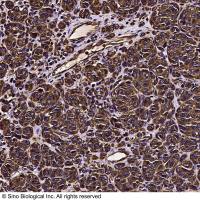Minor Histocompatibility Antigen Typing by DNA Sequencing for Clinical Practice in Hematopoietic Stem-Cell Transplantation
互联网
互联网
相关产品推荐

Hemagglutinin/HA重组蛋白|Recombinant H1N1 (A/California/04/2009) HA-specific B cell probe (His Tag)
¥2570

牛血清白蛋白;阿拉丁Endonuclease, Exonuclease, Rnases, 无蛋白酶, blood typing: suitable;阿拉丁
¥1528.90

Vimentin Antibody, Rabbit PAb, Antigen Affinity Purified | Vimentin 兔多抗 (抗原亲和纯化)
¥1699

Zika virus (ZIKV) (strain Zika SPH2016) ZIKV-E (Stem/anchor domain of flavivirus envelope glycoprotein E) protein (Fc Tag)
¥4520

Recombinant-Lemna-minor-ATP-synthase-subunit-a-chloroplasticatpIATP synthase subunit a, chloroplastic Alternative name(s): ATP synthase F0 sector subunit a F-ATPase subunit IV
¥10976
相关问答

